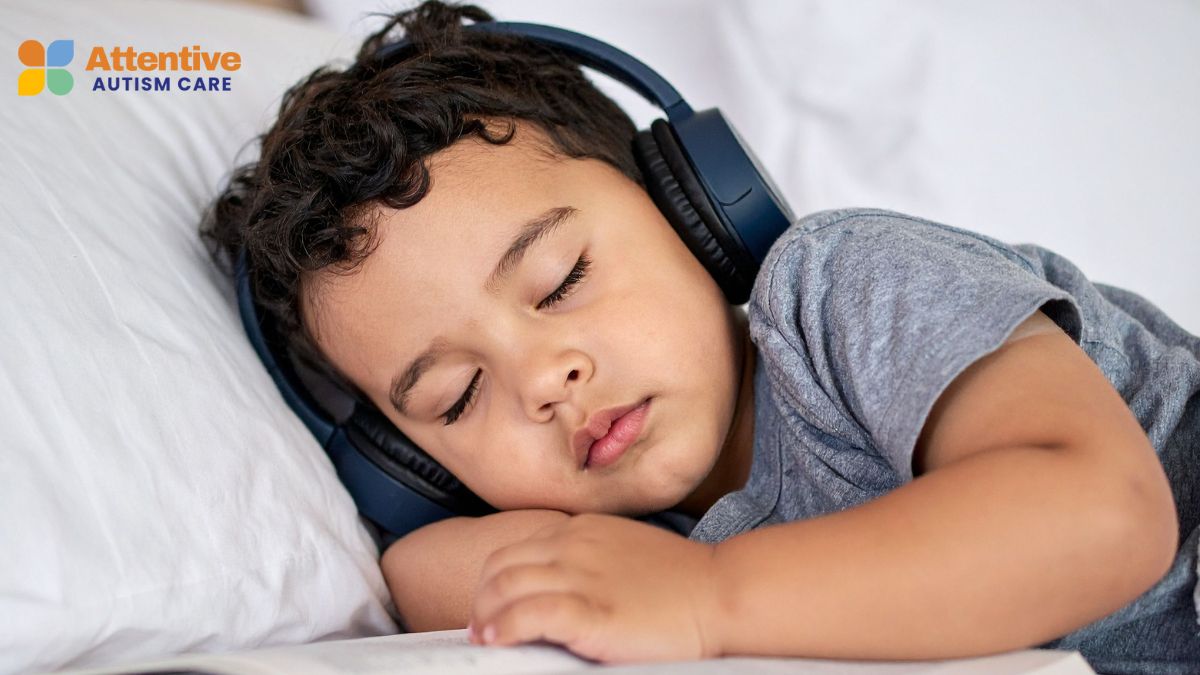Alexithymia: Causes, Symptoms & Treatments
Understanding the Complexities of Emotional Recognition

Unveiling the Nature of Alexithymia
Alexithymia is a subtle yet impactful psychological trait that affects how individuals recognize, understand, and express their emotions. While it is not classified as a mental disorder, its significant presence in various psychiatric and neurological conditions underscores the importance of understanding its causes, symptoms, and potential management strategies.
What is Alexithymia?
Definition of alexithymia
Alexithymia is a psychological trait characterized by difficulties in recognizing, understanding, and expressing one’s own emotions. People with this condition often struggle to differentiate between emotional feelings and bodily sensations, which can make emotional communication and self-awareness challenging. It is sometimes called 'emotional blindness' because of the impaired ability to experience or articulate feelings clearly.
This trait is not classified as a mental disorder but is observed across various psychiatric and neurological conditions, affecting roughly 1 in 10 people in the general population. It can present as limited fantasy life, poor emotional insight, and a tendency to focus more on physical symptoms than emotional cues.
How it differs from emotional coldness or introversion
While alexithymia can mimic emotional coldness due to its outward appearance of emotional disconnect, it is not the same as being emotionally aloof or introverted. Individuals with alexithymia do experience emotions internally; they simply have difficulty recognizing or expressing them. In contrast, emotionally cold or introverted individuals may genuinely have fewer emotional experiences or prefer solitude without necessarily having impaired emotional awareness.
Impact on personal and social functioning
Alexithymia can significantly affect personal relationships and social participation. People with the trait may appear indifferent or unresponsive, which can lead to misunderstandings with friends, family, or colleagues. They often find it challenging to interpret social cues or empathize with others’ feelings, resulting in social withdrawal or feelings of loneliness.
Moreover, difficulties in identifying and expressing emotions can hinder emotional regulation, leading to increased stress, depression, or anxiety. Without proper recognition of their emotional states, managing mental health becomes more complicated, and untreated alexithymia may exacerbate conditions like depression and PTSD.
Understanding the causes behind alexithymia helps in addressing these challenges and developing effective interventions tailored to enhance emotional awareness and social functioning.
Causes of Alexithymia
The origins of alexithymia are diverse and complex. Genetic factors may play a role, with certain genes involved in neurotransmitter regulation influencing emotional processing. Brain injuries or neurological conditions—particularly damage to areas like the insula and anterior cingulate cortex—can impair the brain’s ability to process emotions.
Environmental influences, such as childhood trauma, emotional neglect, or growing up in environments where expression of feelings was discouraged, also contribute significantly. Many individuals with autism spectrum disorder, depression, Parkinson’s disease, or after traumatic brain injuries show higher prevalence of alexithymia due to adaptive changes or injury to critical brain regions involved in emotional awareness.
The development of alexithymia is believed to involve an interplay of biological, developmental, and psychological factors, making it a multifaceted challenge that requires a nuanced understanding for effective management.
| Aspect | Details | Additional Notes |
|---|---|---|
| Genetic Factors | Possible gene involvement related to neurotransmitter function | Not yet fully understood |
| Brain Damage | Injury to insula and anterior cingulate cortex | Often seen in neurological conditions |
| Environmental | Childhood trauma, emotional neglect | Impactful especially when emotional expression is suppressed |
| Associated Conditions | Autism spectrum disorder, depression, Parkinson’s, TBI | Higher rates among these groups |
Through a better grasp of its causes, healthcare providers can tailor interventions to improve emotional recognition and social interaction skills, ultimately enhancing quality of life for those affected.
Recognizing the Symptoms of Alexithymia
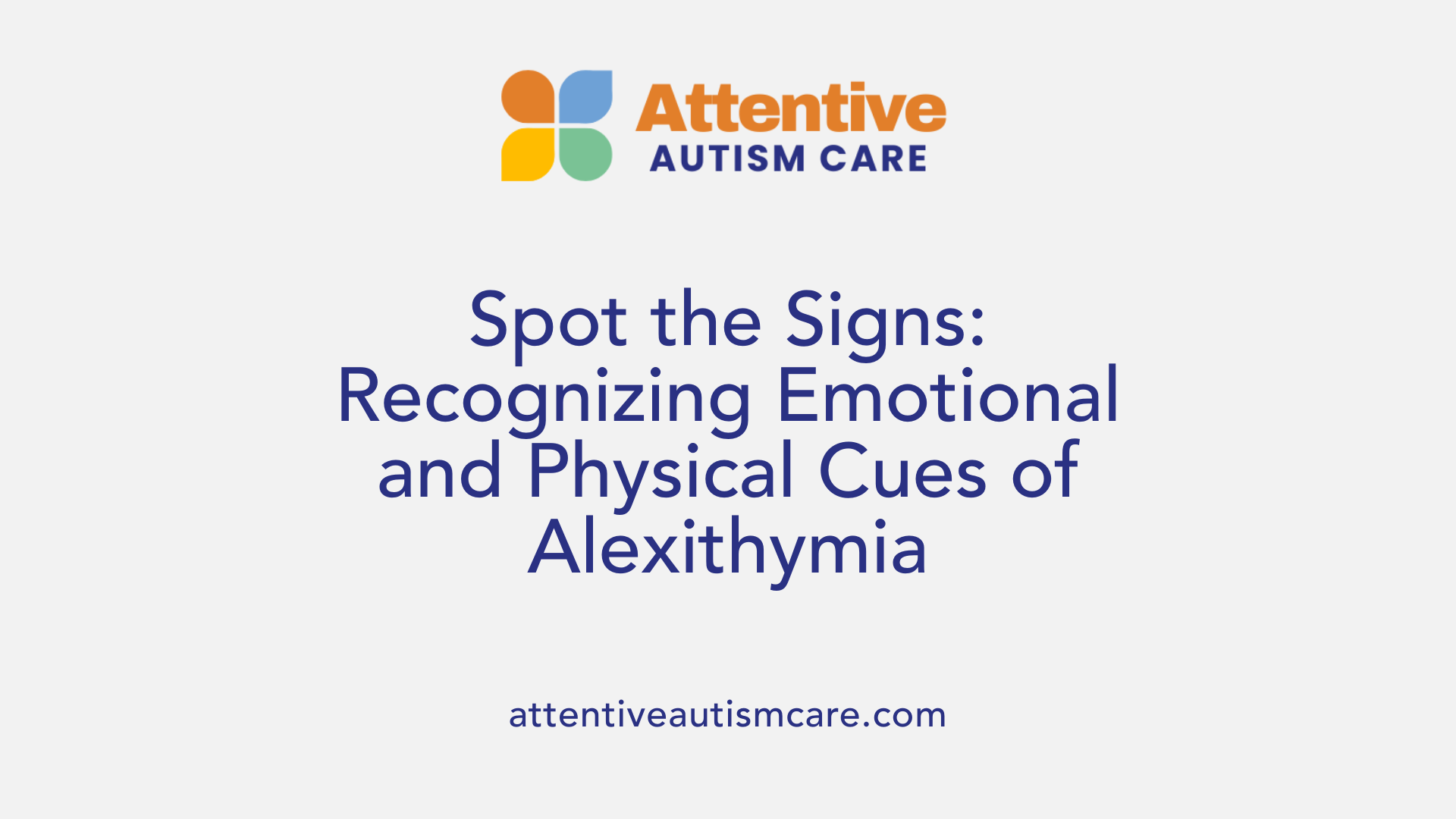
Difficulty identifying and describing feelings
People with alexithymia often struggle to pinpoint what they are feeling internally. They find it challenging to put their emotions into words, which can make conversations about feelings difficult and frustrating. This difficulty extends to their own experiences, making emotional awareness a significant hurdle.
Confusion between bodily sensations and emotions
A common trait among those with alexithymia is confusion between physical sensations and emotional states. For instance, they might interpret emotional distress as physical pain or discomfort, focusing on bodily symptoms like fatigue or aches rather than recognizing these as signals of underlying emotional issues.
Limited ability to recognize emotions in others
Recognizing how others feel is another challenge. Individuals may have trouble reading facial expressions, tone of voice, or body language, which makes social interactions and empathy more difficult. This can lead to misunderstandings and social withdrawal.
Presence of somatic symptoms
Due to their limited emotional awareness, many with alexithymia report somatic symptoms such as headaches, gastrointestinal discomfort, or fatigue. These physical complaints are often responses to emotional stress or unresolved feelings that they find hard to process.
Overall Symptoms Overview
Symptoms of alexithymia include difficulty identifying and describing one's feelings, frequent confusion between bodily sensations and emotional states, limited recognition of emotions in others, and the presence of various somatic symptoms. These features can cause social isolation, relationship issues, and exacerbate mental health conditions like depression or anxiety.
Research indicates that these symptoms stem from underlying neurological and psychological factors, often involving brain areas such as the insula, which are crucial for emotional processing. Recognizing these signs early can help in seeking appropriate therapeutic support.
For further understanding, searching “Symptoms of alexithymia and emotional awareness deficits” can provide additional insights into how these symptoms manifest and are managed.
Diagnosing Alexithymia: Methods and Challenges
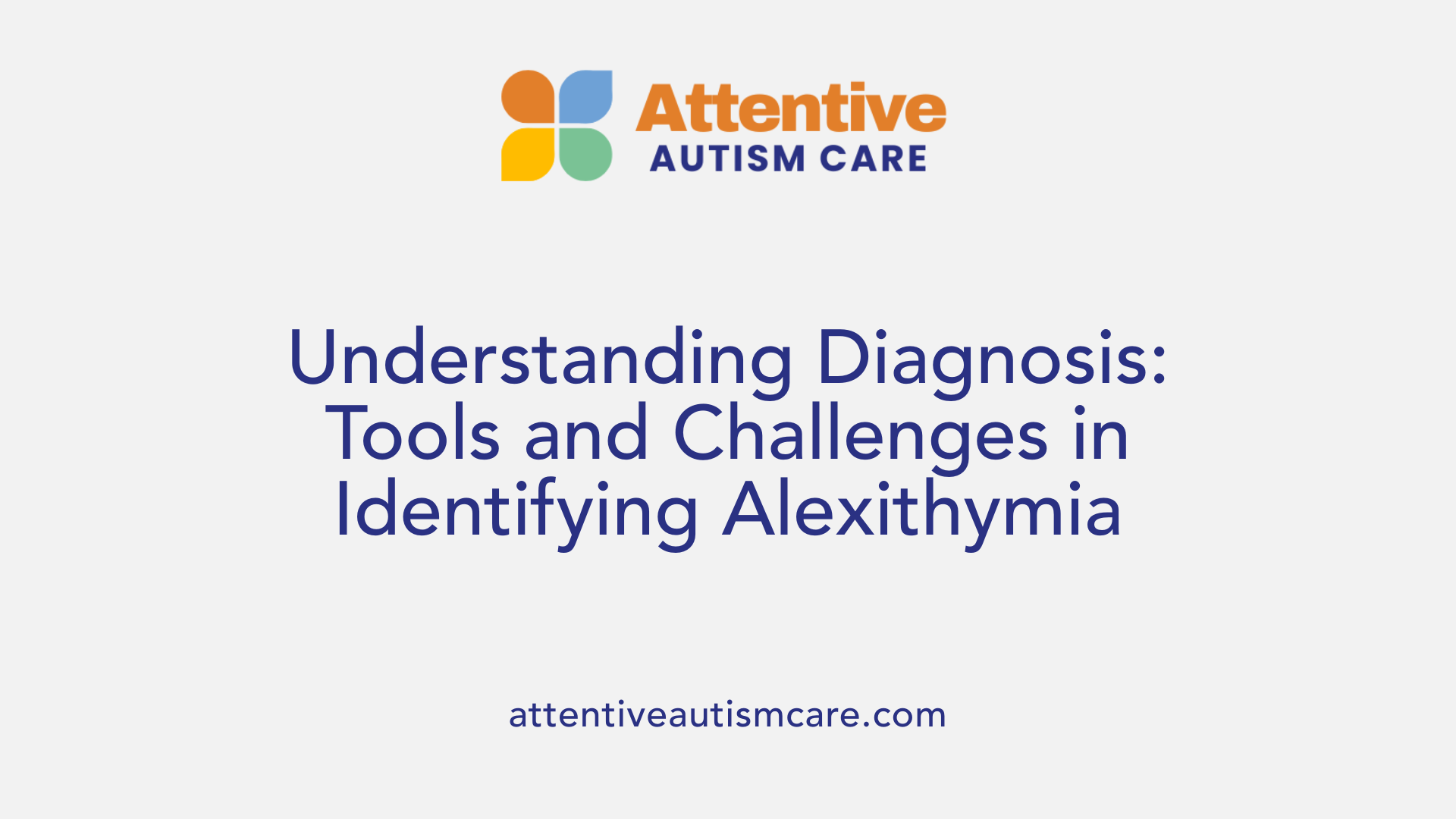
How is alexithymia diagnosed?
Diagnosing alexithymia is primarily carried out by mental health professionals through detailed clinical assessments. Since it is not officially classified as a mental disorder, there is no single diagnostic test, making clinical judgment and standardized questionnaires essential.
One of the most widely used tools is the Toronto Alexithymia Scale (TAS-20). This self-report questionnaire assesses three main components: difficulty identifying feelings, difficulty describing feelings, and an externally-oriented thinking style. The TAS-20 helps clinicians understand how a person perceives and processes their emotions.
Alongside the TAS-20, other assessment instruments include the Bermond–Vorst Alexithymia Questionnaire (BVAQ), which measures emotional awareness and imagination, and the Observer Alexithymia Scale (OAS), which relies on external observations by clinicians or close contacts.
In addition to questionnaires, clinical interviews allow professionals to explore a person’s emotional experiences in depth. They can evaluate the individual’s ability to recognize, differentiate, and communicate feelings effectively.
In some cases, neuroimaging techniques such as MRI scans are used, especially to observe structural differences in brain regions involved in emotion regulation, like the insula. Although not part of standard diagnosis, these scans can support the assessment when neurological factors are suspected.
Because of the complexity and overlap with other conditions such as autism, depression, or neurological disorders, diagnosing alexithymia often requires comprehensive evaluation. Clinicians must differentiate it from other emotional or cognitive issues to tailor appropriate interventions.
Research has shown that combining clinical assessments with neuroimaging may improve understanding of underlying brain mechanisms, but the mainstay remains psychological testing and clinical observation.
The Link Between Alexithymia and Other Conditions
What is the relationship between alexithymia and other psychiatric or neurological conditions?
Alexithymia is frequently observed alongside a range of mental health and neurological disorders. It is especially common among individuals with depression, with research showing that between 27% and 50% of those suffering from depressive disorders also experience significant levels of alexithymia.
In autism spectrum disorder (ASD), up to half of the individuals may have co-occurring alexithymia, although it is technically a different phenomenon from autism itself. Similarly, conditions like PTSD, eating disorders, and schizophrenia have been linked to higher rates of alexithymia. These patients often struggle with recognizing and processing their emotions, which can exacerbate their primary conditions.
The presence of alexithymia can complicate the clinical picture, making treatment more challenging. Emotional difficulties may lead to poorer engagement in therapy, and the inability to articulate feelings hampers therapeutic progress. This trait also correlates with increased severity of symptoms and emotional dysregulation across various disorders.
Neurologically, deficits in emotion regulation linked to dysfunction in specific brain areas — particularly the insula and anterior cingulate cortex — help explain these associations. Damage or atypical functioning in these regions can impair a person’s ability to process internal emotional cues, contributing to a higher prevalence of alexithymia in neurodegenerative diseases such as Parkinson’s, stroke, and traumatic brain injury.
Overall, alexithymia acts as a transdiagnostic factor, influencing both the manifestation and the treatment outcomes of numerous mental health conditions. Recognizing and assessing it is vital for tailoring effective intervention strategies.
Treatment Strategies and Management Options
What treatments are available for alexithymia?
There are currently no official medications specifically approved for treating alexithymia, but various therapeutic approaches can help individuals improve their emotional awareness and expression. Psychodynamic therapy is often used to help individuals explore underlying emotional conflicts and develop better emotional understanding. Similarly, cognitive-behavioral therapy (CBT) can assist in recognizing and modifying thought patterns related to emotional processing.
Group therapy provides a supportive environment where individuals can practice social skills, emotional recognition, and communication in a safe setting. Emotion regulation skills training, often incorporated into therapies like Dialectical Behavior Therapy (DBT), can help individuals manage overwhelming feelings and improve emotional control.
In addition to talk therapies, techniques like mindfulness and psychoeducation are valuable. Mindfulness practices encourage awareness of physiological responses and bodily sensations linked to emotions, helping to bridge the gap between physical feelings and emotional states. Psychoeducation about emotions fosters understanding and normalizes emotional experiences.
Creative activities such as art, music, or journaling are also used as supportive strategies. These activities help individuals express feelings indirectly and can enhance emotional literacy.
Addressing co-occurring conditions such as depression, PTSD, or neurodevelopmental disorders like autism spectrum disorder is crucial. Effective treatment of these conditions can improve overall emotional functioning.
More approaches include:
| Method | Description | Additional Details |
|---|---|---|
| Psychodynamic therapy | Focuses on exploring emotional conflicts | Helps identify and understand underlying emotional issues |
| Cognitive Behavioral Therapy | Changes thought patterns affecting emotions | Provides skills for recognizing and managing emotions |
| Group therapy | Promotes social skills and emotional sharing | Connects individuals with similar experiences |
| Mindfulness | Enhances awareness of bodily sensations | Supports emotional regulation |
| Psychoeducation | Increases awareness and understanding of emotions | Normalizes emotional difficulties |
| Creative activities | Facilitates emotional expression | Supports emotional literacy |
How does addressing co-occurring conditions help?
Since alexithymia often coexists with mental health conditions like depression, PTSD, and autism, managing these can significantly improve emotional processing. Tailored treatments for these conditions can reduce emotional barriers and enhance the effectiveness of therapy focusing specifically on alexithymia.
In summary, treatment for alexithymia emphasizes supportive psychotherapy, skills training, and managing related mental health issues. With persistent effort, many individuals can develop better emotional awareness and improve their social and personal relationships.
Can Alexithymia Be Cured?
Alexithymia is generally considered a personality trait rather than a disorder that can be cured outright. It reflects a persistent difficulty in recognizing, describing, and processing emotions, and it often exists across a person's lifespan.
Since it is not classified as a mental health disorder, there is no standard medical treatment or cure designed to eliminate it completely. However, significant progress can be made through various therapeutic approaches that aim to improve emotional understanding and expression.
Therapies such as cognitive behavioral therapy (CBT) and dialectical behavior therapy (DBT) are often used to help individuals develop greater emotional literacy. These approaches encourage skill-building around identifying emotions, regulating emotional responses, and communicating feelings more effectively. Support groups and creative activities like journal writing and art therapy can also foster emotional awareness.
While total eradication of alexithymia might not be feasible in all cases, many individuals experience meaningful improvements in their ability to recognize and articulate their feelings. This can lead to better relationships, reduced stress, and an overall enhanced quality of life.
It is important to note that the success of treatment depends on individual circumstances, including whether the alexithymia is primary or a symptom of an underlying condition like depression or neurological injury. Ongoing therapy and coping strategies are typically necessary to maintain progress.
Managing and improving alexithymia through therapy involves consistent effort and tailored approaches, but it offers hope for many people to live more emotionally connected and fulfilling lives.
Supporting Individuals with Alexithymia: Practical Tips
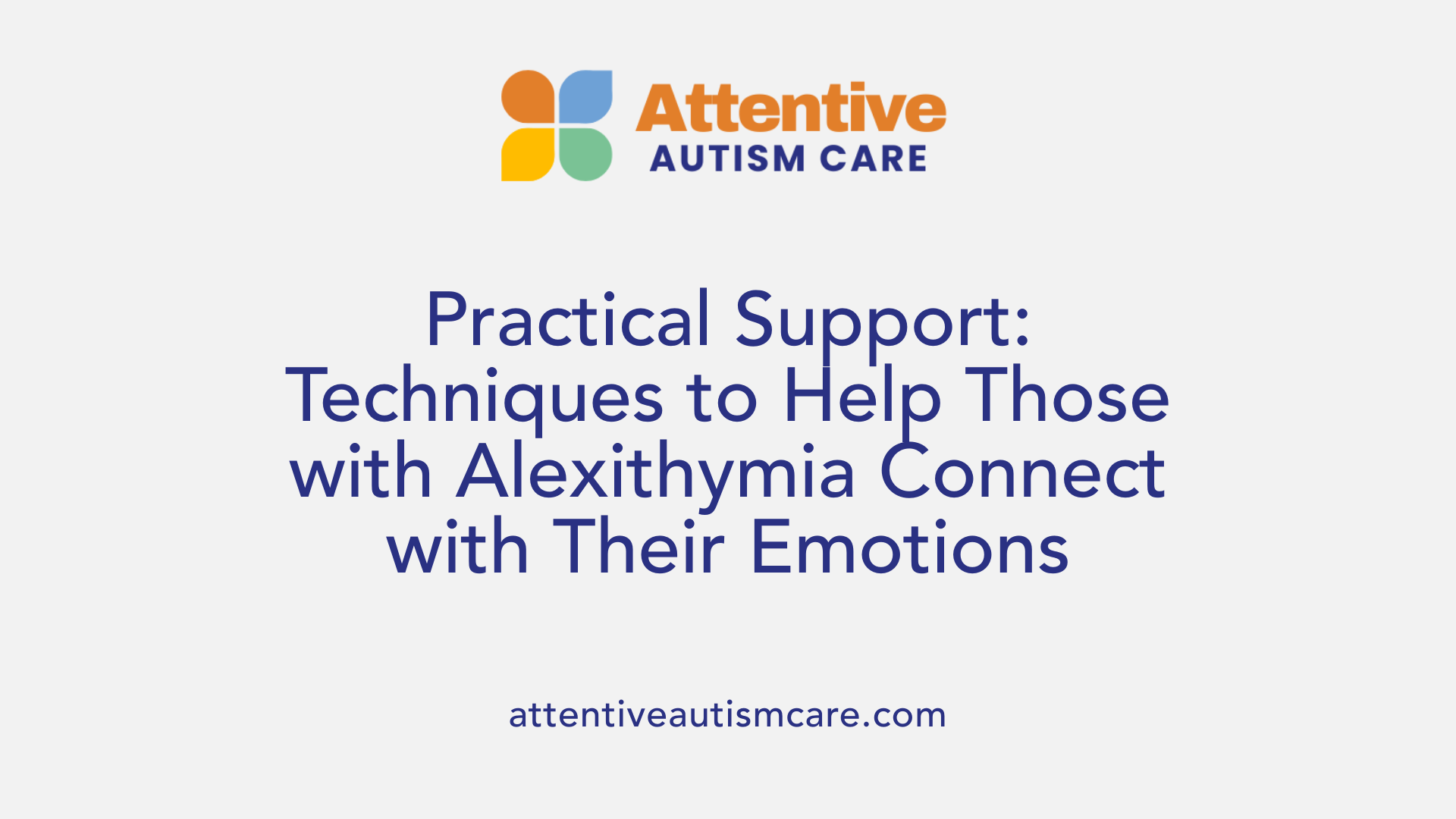
Mindfulness of physiological responses
One effective way to support someone with alexithymia is encouraging mindfulness of their physiological responses. Since individuals may have difficulty recognizing emotions effectively, paying attention to physical cues such as heart rate, muscle tension, or breathing patterns can help them connect bodily sensations with emotional states. Using tools like heart rate monitors or breathing exercises can heighten awareness of emotional reactions.
Practicing mindfulness meditation can also foster greater interoceptive awareness, helping individuals become more attuned to internal signals without judgment. In turn, this awareness can assist in identifying feelings and managing emotional responses more effectively.
Journaling and tracking emotional patterns
Journaling is a practical method for individuals to explore and understand their emotional experiences. Keeping a daily record of physical sensations, thoughts, and emotional responses can reveal patterns or triggers that might otherwise go unnoticed.
This process helps to develop a clearer vocabulary for feelings and increases the ability to recognize emotions in various situations. Over time, tracking these patterns can support emotional regulation and provide valuable insights during therapy sessions.
Recognizing the importance of negative emotions
While people often aim to avoid negative feelings, acknowledging these emotions is crucial in managing them effectively. For someone with alexithymia, negative emotions might be overlooked or dismissed as physical discomfort.
Encouraging an accepting attitude toward negative emotions helps normalize their experience. Understanding that feelings like sadness, anger, or fear provide important information can motivate individuals to pay attention to these signals, ultimately fostering emotional growth and resilience.
Building emotional vocabulary
Another helpful strategy is working on expanding emotional vocabulary. Since individuals with alexithymia often struggle to articulate feelings, learning and practicing the words for different emotions can make a difference.
Using resources such as emotion charts, flashcards, or discussing feelings with a therapist can help build this vocabulary. When people can label their emotions accurately, they are more likely to understand what they are experiencing and communicate more effectively with others.
These approaches, combined, support better emotional awareness and regulation, which can significantly enhance the quality of life for individuals coping with alexithymia.
The Neurobiological Underpinnings of Alexithymia
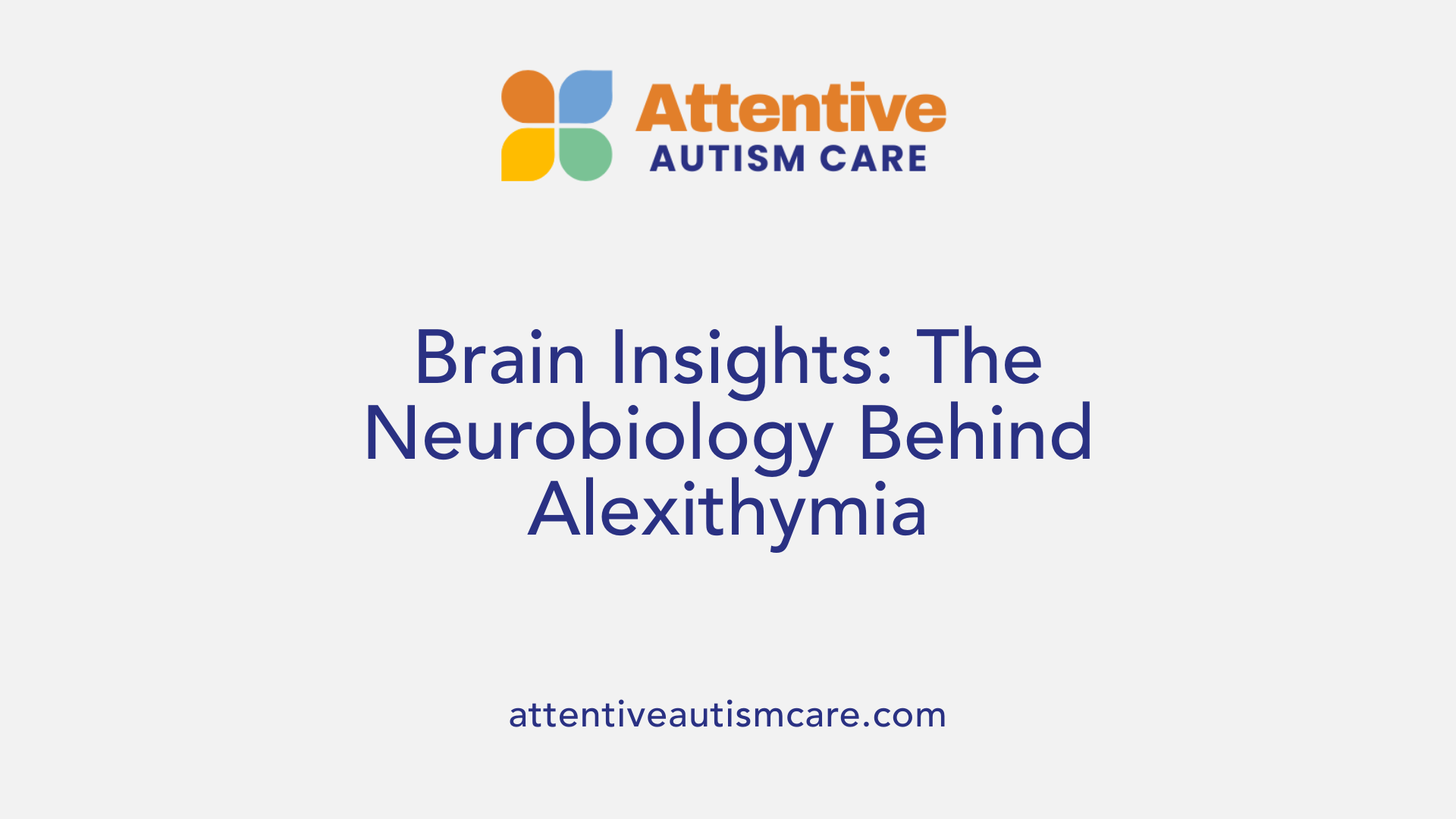
Brain regions involved (insula, anterior cingulate cortex)
Alexithymia has been closely linked to alterations in specific brain areas responsible for processing emotions and social behaviors. The insula, especially the anterior part, plays a vital role in awareness of bodily sensations and emotional experiences. Damage or reduced activity in this region can impair a person's ability to recognize and interpret internal emotional states.
Similarly, the anterior cingulate cortex (ACC) is involved in emotion regulation, empathy, and decision-making related to social interactions. Dysfunction in the ACC can contribute to difficulties in emotional awareness and expression.
Research has shown that individuals with alexithymia often exhibit decreased connectivity or activity in these regions, leading to their characteristic challenges in experiencing and articulating emotions.
Neurotransmitter and structural brain factors
Beyond regional brain activity, neurochemical imbalances also influence alexithymia. Serotonin and dopamine pathways, which modulate mood and emotional regulation, may be disrupted in individuals with this condition.
Structurally, variations in white matter integrity and cortical thickness in the insula and ACC have been observed, suggesting that neural wiring differences underpin emotional processing deficits.
Genetic factors may predispose some individuals to these brain differences, while environmental influences like trauma or brain injuries can exacerbate or precipitate alexithymic traits.
Impact of brain damage and neurodevelopmental factors
Acquired brain injuries, such as strokes or traumatic brain injuries targeting the insula or cingulate cortex, can lead to increased alexithymic symptoms. Neurodevelopmental conditions, including autism spectrum disorder, often involve atypical development in these areas, which is associated with the higher prevalence of alexithymia in these groups.
Overall, the neurobiological perspective on alexithymia highlights a complex interplay between structural brain differences, neurochemistry, and environmental influences, affecting how emotions are experienced, processed, and communicated.
Educational and Awareness Initiatives
Importance of public awareness
Raising awareness about alexithymia is essential because many people with the condition might not recognize their emotional difficulties or understand that support is available. Public education campaigns can demystify the traits associated with alexithymia, such as emotional disconnection and difficulty expressing feelings. Increased understanding can reduce misconceptions that individuals are simply cold or uncaring, fostering empathy within communities.
Training for mental health professionals
Healthcare providers need specialized training to recognize signs of alexithymia accurately. This includes understanding how it differs from other conditions and knowing how to incorporate assessment tools like the Toronto Alexithymia Scale (TAS-20) into routine evaluations. Skilled professionals can then tailor interventions, such as cognitive behavioral therapy (CBT) or mindfulness practices, to help individuals improve emotional awareness.
Incorporation of assessment tools in clinical practice
Using standardized questionnaires like TAS-20 allows clinicians to identify alexithymic traits systematically. Incorporating these tools into regular mental health assessments ensures that emotional recognition difficulties are not overlooked, especially when treating co-occurring mental health disorders such as depression, PTSD, or autism spectrum disorder. Early detection facilitates targeted therapy and better treatment outcomes.
Reducing stigma associated with emotional recognition difficulties
Many individuals with alexithymia might feel ashamed or misunderstood. Education campaigns should emphasize that alexithymia is a trait linked to neurological and developmental factors, not a character flaw. Promoting openness and acceptance helps create a supportive environment where individuals are encouraged to seek help without fear of judgment.
| Initiative Area | Key Actions | Additional Notes |
|---|---|---|
| Public Awareness | Launch educational campaigns | Focus on symptoms and support resources |
| Professional Training | Offer workshops and modules | Enhance diagnostic skills |
| Clinical Tools | Standardize use of TAS-20 | Improve detection accuracy |
| Stigma Reduction | Share testimonials and informational content | Promote understanding and compassion |
The Path Toward Better Emotional Understanding
While alexithymia presents unique challenges in emotional recognition and expression, advances in neurobiological research, clinical assessment, and therapeutic interventions offer hope for improved management. Raising awareness, educating both the public and mental health professionals, and developing targeted strategies can help individuals better navigate their emotional worlds, ultimately enhancing their social interactions and overall well-being. Continued research into its causes and effective treatments remains vital for fostering a more emotionally aware society.
References
- Alexithymia: Causes, Symptoms, and Treatments - Healthline
- Alexithymia: Symptoms, diagnosis, and related conditions
- Alexithymia (Emotional Blindness): Causes, Meaning, More - Health
- Alexithymia - PMC - PubMed Central
- Alexithymia: What Is It, Signs, Symptoms, and More | Osmosis
- A beginner's guide to alexithymia - American Counseling Association
- What Is Alexithymia | Charlie Health
- What Is Alexithymia? Causes, Signs & How to Heal - My LA Therapy
- Alexithymia: Symptoms, diagnosis, and related conditions





















































































